Seungmin Rho
Estimating Continuous Muscle Fatigue For Multi-Muscle Coordinated Exercise: A Pilot Study
Mar 30, 2023Abstract:Assessing the progression of muscle fatigue for daily exercises provides vital indicators for precise rehabilitation, personalized training dose, especially under the context of Metaverse. Assessing fatigue of multi-muscle coordination-involved daily exercises requires the neuromuscular features that represent the fatigue-induced characteristics of spatiotemporal adaptions of multiple muscles and the estimator that captures the time-evolving progression of fatigue. In this paper, we propose to depict fatigue by the features of muscle compensation and spinal module activation changes and estimate continuous fatigue by a physiological rationale model. First, we extract muscle synergy fractionation and the variance of spinal module spikings as features inspired by the prior of fatigue-induced neuromuscular adaptations. Second, we treat the features as observations and develop a Bayesian Gaussian process to capture the time-evolving progression. Third, we solve the issue of lacking supervision information by mathematically formulating the time-evolving characteristics of fatigue as the loss function. Finally, we adapt the metrics that follow the physiological principles of fatigue to quantitatively evaluate the performance. Our extensive experiments present a 0.99 similarity between days, a over 0.7 similarity with other views of fatigue and a nearly 1 weak monotonicity, which outperform other methods. This study would aim the objective assessment of muscle fatigue.
Development of a Machine-Learning System to Classify Lung CT Scan Images into Normal/COVID-19 Class
Apr 24, 2020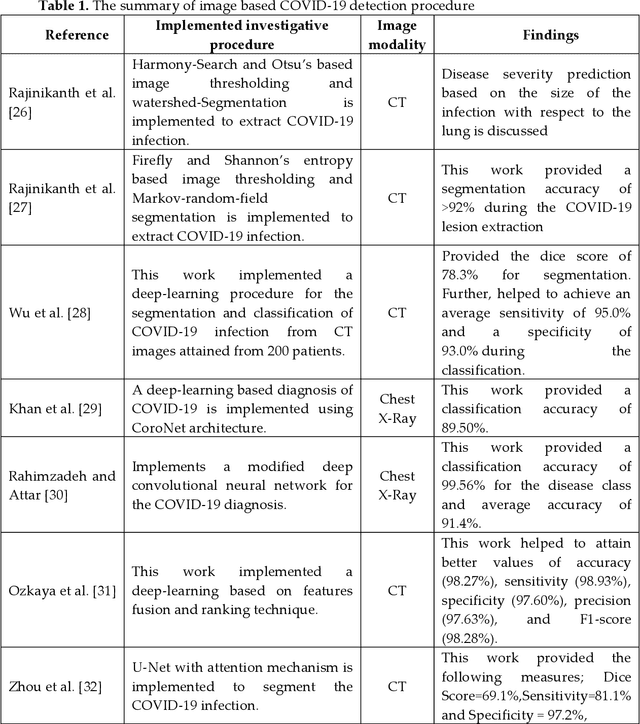
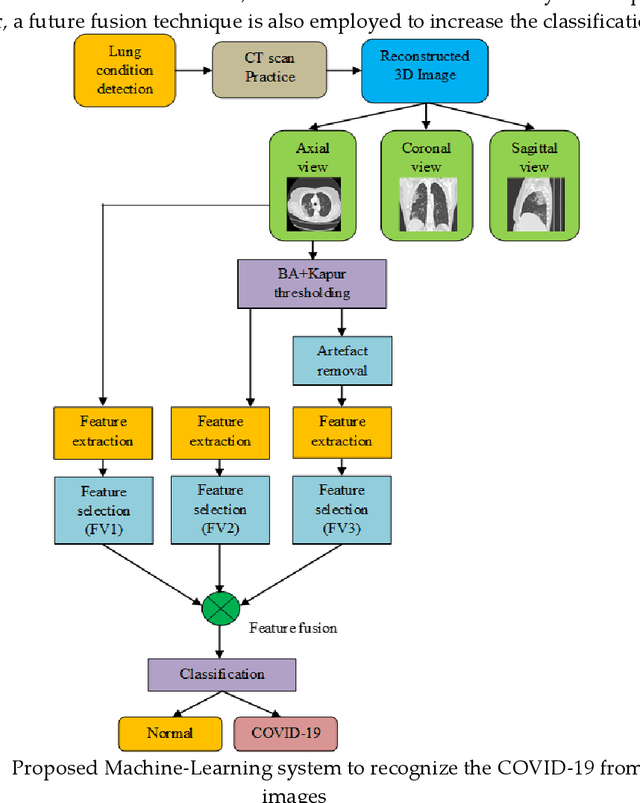


Abstract:Recently, the lung infection due to Coronavirus Disease (COVID-19) affected a large human group worldwide and the assessment of the infection rate in the lung is essential for treatment planning. This research aims to propose a Machine-Learning-System (MLS) to detect the COVID-19 infection using the CT scan Slices (CTS). This MLS implements a sequence of methods, such as multi-thresholding, image separation using threshold filter, feature-extraction, feature-selection, feature-fusion and classification. The initial part implements the Chaotic-Bat-Algorithm and Kapur's Entropy (CBA+KE) thresholding to enhance the CTS. The threshold filter separates the image into two segments based on a chosen threshold 'Th'. The texture features of these images are extracted, refined and selected using the chosen procedures. Finally, a two-class classifier system is implemented to categorize the chosen CTS (n=500 with a pixel dimension of 512x512x1) into normal/COVID-19 group. In this work, the classifiers, such as Naive Bayes (NB), k-Nearest Neighbors (KNN), Decision Tree (DT), Random Forest (RF) and Support Vector Machine with linear kernel (SVM) are implemented and the classification task is performed using various feature vectors. The experimental outcome of the SVM with Fused-Feature-Vector (FFV) helped to attain a detection accuracy of 89.80%.
Describing Colors, Textures and Shapes for Content Based Image Retrieval - A Survey
Feb 25, 2015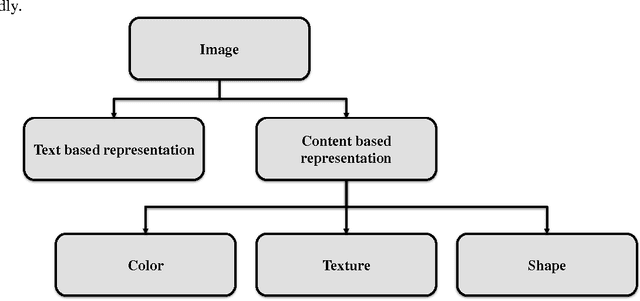
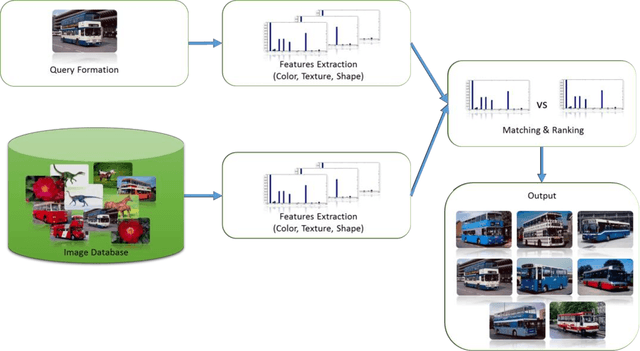

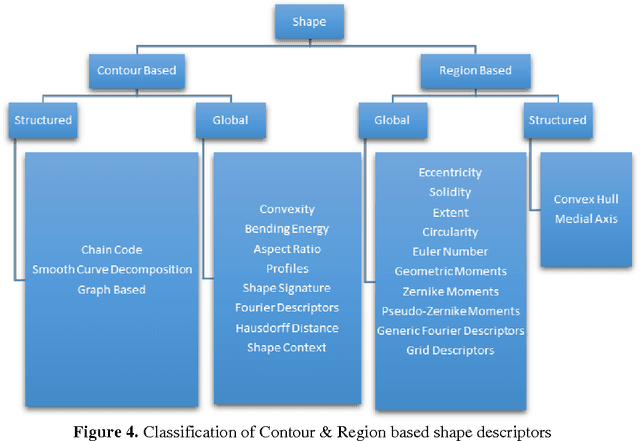
Abstract:Visual media has always been the most enjoyed way of communication. From the advent of television to the modern day hand held computers, we have witnessed the exponential growth of images around us. Undoubtedly it's a fact that they carry a lot of information in them which needs be utilized in an effective manner. Hence intense need has been felt to efficiently index and store large image collections for effective and on- demand retrieval. For this purpose low-level features extracted from the image contents like color, texture and shape has been used. Content based image retrieval systems employing these features has proven very successful. Image retrieval has promising applications in numerous fields and hence has motivated researchers all over the world. New and improved ways to represent visual content are being developed each day. Tremendous amount of research has been carried out in the last decade. In this paper we will present a detailed overview of some of the powerful color, texture and shape descriptors for content based image retrieval. A comparative analysis will also be carried out for providing an insight into outstanding challenges in this field.
 Add to Chrome
Add to Chrome Add to Firefox
Add to Firefox Add to Edge
Add to Edge